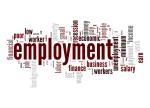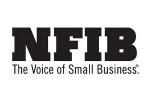WASHINGTON – According to monthly jobs report provided by the National Federation of Independent Business (NFIB), a seasonally adjusted net 14% of small business owners plan to create new jobs in the next three months, down two points from December and the lowest level since May 2020. Of all owners, 39% (seasonally adjusted) reported job openings they could not fill in the current period, down one point from December and the lowest reading since January 2021.
“Although consumer spending remains strong, small business owners cannot find enough workers to fill their open positions,” said NFIB Chief Economist Bill Dunkelberg. “Owners continue to raise compensation to retain and attract workers with the skills and willingness to do the job, but hiring remains a struggle in the tight labor market.”
The percentage of small business owners reporting labor quality as their top small business operating problem remains elevated at 21%, up one point from December. Labor costs reported as the single most important problem for business owners increased one point to 10%, three points below the highest reading of 13% reached in December 2021.
Overall, 55% of owners reported hiring or trying to hire in January, unchanged from December. Of those hiring or trying to hire, 89% reported few or no qualified applicants for the positions they were trying to fill, unchanged from December. Twenty-six percent of owners reported few qualified applicants for their open positions (down two points) and 23% reported none (up two points).
Seasonally adjusted, a net 39% reported raising compensation, up three points from December and the highest reading since May 2023. A net 26% plan to raise compensation in the next three months, down three points from December but still historically high.
Thirty percent have openings for skilled workers (down three points) and 15% have openings for unskilled labor (up one point).
Job openings in construction were down 11 points from last month but almost half have a job opening they can’t fill. Job openings were the highest in the construction, manufacturing, and non-professional services sectors, and the lowest in the professional services and finance sectors.
Have a question or comment? E-mail our editor Dave Davis at [email protected].





































